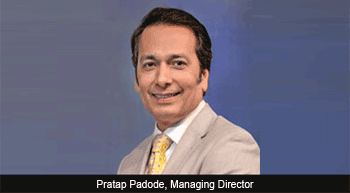Resumption and broad-basing of private investments has become critical to sustain the share of infrastructure investments. Lately, the private sector’s weak investment capacity and muted risk appetite – given their stretched balance sheets and banks’ reluctance to fund infrastructure projects, which they perceived as risky -has been offset, partly by a sharp increase in public spending.
<p></p>
<p>The private share, which averaged 37 per cent between fiscals 2008 and 2013, fell 600 basis points (bps) between fiscals 2013 and 2017 as a plethora of stalled projects and stressed assets dampened investor’s interest and risk appetite. The share of private investments in infrastructure has fallen to a decadal low of around 25 per cent in fiscal 2018. This has resulted in a material ramp-up in government spendings which was close to Rs 6 trillion in fiscal 2018, a 21per cent jump from nearly Rs 5 trillion in fiscal 2017. </p>
<p>That said, despite the government’s infrastructure spending spree, reports suggests that the overall expenditure in the sector has witnessed a decline from an estimated 7 per cent of GDP during fiscals 2008-2012 to about 5.8 per cent during fiscals 2013-2017. As private spending fell further in the tail years of this period, infrastructure spending in GDP terms has come down further. Given this, as per the observation made by CRISIL, a ramp-up in infrastructure spending to the vicinity of 6 per cent of GDP is necessary to bridge infrastructure deficits and support accelerated economic growth. And this is clearly not attainable with public investments alone. </p>
<p>The anxiety on government’s capacity to keep up the public spending tempo is compounded by lower than expected GST collections amid the spike in oil prices and currency volatility.</p>
<p>In the context, an expeditious revival of private investment and PPPs in infrastructure becomes an absolute imperative for India’s infrastructure buildout. The experience gained from India’s tryst with PPPs, both successes and setbacks, holds instructive lessons. A re-assessment of our PPP framework factoring these lessons will help prepare the ground to tap private investment and capabilities more consistently and sustainably. </p>
<p>Here, the question arises is how can the government streamline the private investment? Our 15th Annual Edition will address this question in a detailed manner. However, a few solutions to mention here are: the Government of India should build capacity to create a bankable pipeline of shovel-ready strategic infrastructure projects worth USD 100-150 billion annually. This will involve creating an in-house team with specialist capabilities in project preparation, ring-fenced budgets for project preparation, guidelines to empanel or engage consultants and transaction advisors for preparatory studies, a rigorous multi-stage, multi-disciplinary review process that leads to bankable and ready-to-implement projects.</p>
<p>A programmatic sector-level thrust with ambitious targets signals policy commitment and forces attention on key enabling factors including sector reforms, and institution-building actions that tend to get side-stepped in case of one-off privatisation or PPP initiatives. This also forces attention to build capacity to handle scale and bring rigour and effectiveness in project preparation. Project preparation needs to be preceded by a systematic assessment of investment needs and translating the same into project concepts which are screened and prioritised for detailed development. For instance, the UK has a tool to help individuals identify areas of development in their skill sets in line with capabilities to deliver infrastructure projects outlined in their project delivery capability framework. Meanwhile, Mexico’s National Development Plan has identified 743 projects for implementation during 2016-2021. The UK National Infrastructure Commission, setup in 2016, not only outlines a strategic vision for infrastructure investment over 30 years, but also holds the government to account for implementation of the project pipeline.</p>
FlashNews:
IWAI Signs ₹13.5 Billion MoUs to Boost Ganga Waterway in Uttar Pradesh
MOVIN Launches Healthcare Logistics Vertical to Tap India’s $638 Billion Industry
Atlanta Electricals Secures ₹2.98 Billion Transformer Orders from GETCO
Waaree Group Wins 10 MWh BESS Order in Tamil Nadu, Expands Domestic Storage Manufacturing
Cabinet Approves ₹27.8 Billion Rail Multitracking to Boost Gujarat and Maharashtra Connectivity
BC Jindal Group Secures 150 MW RTC Power Deal with SECI
India’s Data Centre Revenue to Hit ₹200 Billion By FY2028, Driven by AI, Cloud and 5G: Crisil Ratings
Sanchar Saathi Recovers 50,000 Phones in October; Crosses 700,000 Nationwide Since Launch
Akasa Air Expands Northeast Connectivity, Adds Dibrugarh as 32nd Destination
Ministry of Power Advances India Energy Stack with Taskforce Review of Strategy and Architecture
Vaishnaw Stresses Industry-Aligned Skilling to Power India’s Digital and Electronics Growth
DGCA Issues Urgent Advisory as Ethiopian Ash Cloud Enters Indian Airspace
DFCCIL Freight Operations Surge 48% as Corridors, Terminals Expand
SMFCL Board Clears $3 Billion Borrowing Plan to Accelerate Maritime Infrastructure Financing
Air India Restores Codeshare with Air Canada to Expand India-Canada Flight Network
Indian Railways Freight Loading Surges Past 1 Billion Tonne Milestone This Fiscal
IWAI Signs MoUs to Boost Assam’s Inland Waterways and Industrial Logistics
Air India Express to Launch Services from Navi Mumbai International Airport on Day One
Tata Power, Druk Green Power Corp. Seal ₹1.31 Trillion Pact for Bhutan’s Largest PPP Hydro Project
Home » Public Spending: Can the Government keep up the Tempo?
Public Spending: Can the Government keep up the Tempo?
Roads & Highways
October 31, 2018June 9, 2021



Leave a Reply
You must be logged in to post a comment.